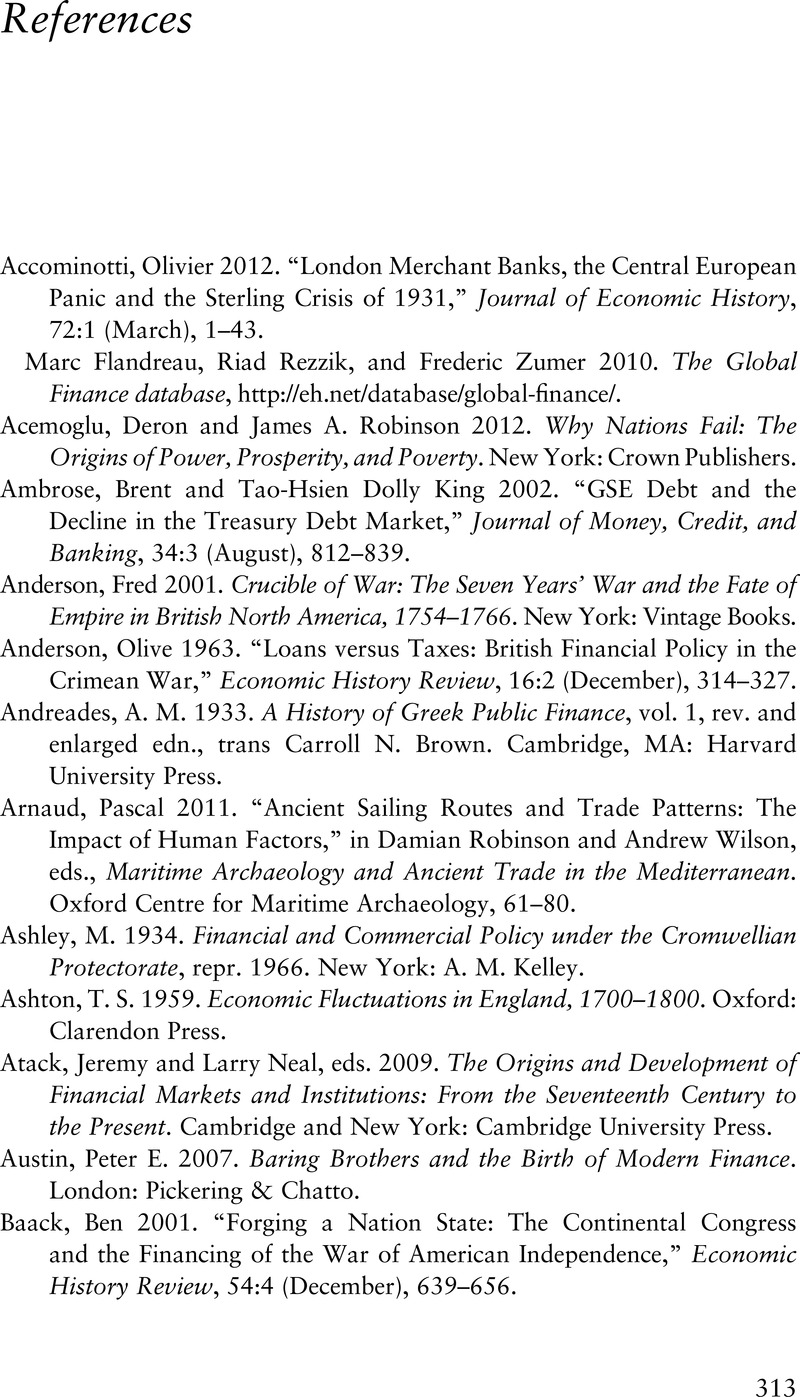Book contents
- Frontmatter
- Contents
- List of figures
- List of boxes
- List of tables
- Preface
- 1 Introduction
- 2 Distant beginnings: the first 3,000 years
- 3 The Italians invent modern finance
- 4 The rise of international financial capitalism: the seventeenth century
- 5 The “Big Bang” of financial capitalism: financing and re-financing the Mississippi and South Sea Companies, 1688–1720
- 6 The rise and spread of financial capitalism, 1720–1789
- 7 Financial innovations during the “birth of the modern,” 1789–1830: a tale of three revolutions
- 8 British recovery and attempts to imitate in the US, France, and Germany, 1825–1850
- 9 Financial globalization takes off: the spread of sterling and the rise of the gold standard, 1848–1879
- 10 The first global financial market and the classical gold standard, 1880–1914
- 11 The Thirty Years War and the disruption of international finance, 1914–1944
- 12 The Bretton Woods era and the re-emergence of global finance, 1945–1973
- 13 From turmoil to the “Great Moderation,” 1973–2007
- 14 The sub-prime crisis and the aftermath, 2007–2014
- References
- Index
- References
References
Published online by Cambridge University Press: 05 October 2015
- Frontmatter
- Contents
- List of figures
- List of boxes
- List of tables
- Preface
- 1 Introduction
- 2 Distant beginnings: the first 3,000 years
- 3 The Italians invent modern finance
- 4 The rise of international financial capitalism: the seventeenth century
- 5 The “Big Bang” of financial capitalism: financing and re-financing the Mississippi and South Sea Companies, 1688–1720
- 6 The rise and spread of financial capitalism, 1720–1789
- 7 Financial innovations during the “birth of the modern,” 1789–1830: a tale of three revolutions
- 8 British recovery and attempts to imitate in the US, France, and Germany, 1825–1850
- 9 Financial globalization takes off: the spread of sterling and the rise of the gold standard, 1848–1879
- 10 The first global financial market and the classical gold standard, 1880–1914
- 11 The Thirty Years War and the disruption of international finance, 1914–1944
- 12 The Bretton Woods era and the re-emergence of global finance, 1945–1973
- 13 From turmoil to the “Great Moderation,” 1973–2007
- 14 The sub-prime crisis and the aftermath, 2007–2014
- References
- Index
- References
Summary

- Type
- Chapter
- Information
- A Concise History of International FinanceFrom Babylon to Bernanke, pp. 313 - 335Publisher: Cambridge University PressPrint publication year: 2015



